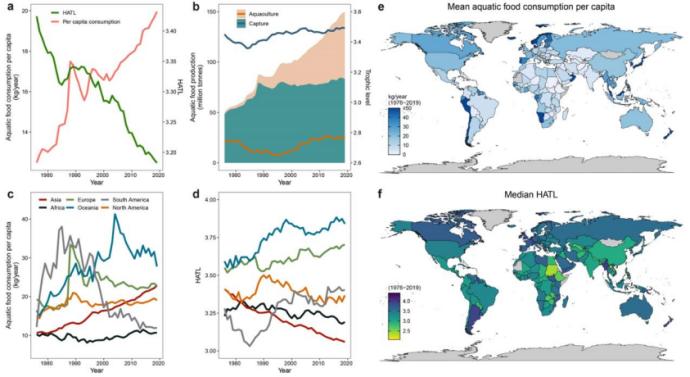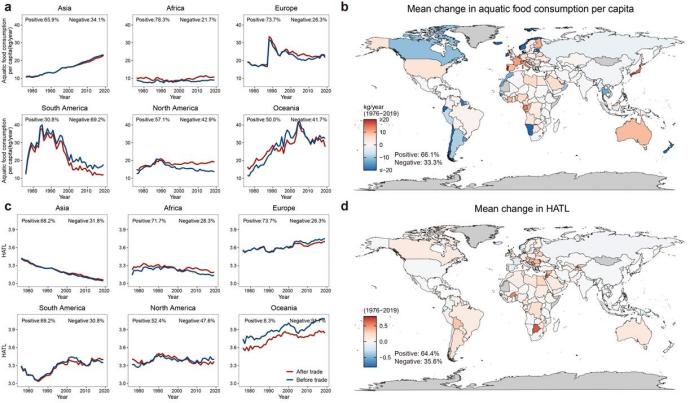Highlights
Effect of trade on global aquatic food consumption patterns
The Sustainable Development Goals (SDGs) agenda puts food security and ending malnutrition as a global priority. Aquatic systems have a significant role to play in meeting these objectives. Fisheries, aquaculture, and their trade are critical to the achievement of food security and sustainable economic, social, and environmental development goals. In recent decades, global fisheries and aquaculture production have grown substantially. Aquatic foods are among the most highly traded commodities in the global food system and are becoming increasingly globalized
Our understanding of the wide diversity of aquatic species produced and traded worldwide, and the impacts of aquatic food products trade across geographies on food security goals remain ambiguous and the evidence is mixed. While previous studies have provided essential insights into general aquatic food trade and consumption characteristics and trade impacts in several countries and regions, our collective understanding of the outcomes of aquatic food globalization is still limited by a fundamental gap between detailed production and trade data.
Recently, a research team led by Prof. XU Jun from the Institute of Hydrobiology (IHB) of the Chinese Academy of Sciences developed a new index called human aquatic food trophic level (HATL) and demonstrated that international trade is improving global aquatic food consumption patterns. This study was published in Nature Communications.
In this study, developed a species-level mass balance and trophic level identification datasets for 174 countries and territories from 1976 to 2019. Based on this dataset, they found that per capita consumption of aquatic foods has increased significantly at the global scale, but the human aquatic food trophic level (HATL), i.e., the average trophic level of aquatic food items in the human diet, is declining (from 3.42 to 3.18) because of the considerable increase in low-trophic level aquaculture species output relative to that of capture fisheries since 1976. Moreover, they also found that trade has contributed to increasing the availability and trophic level of aquatic foods in >60% of the world’s countries. Trade had also reduced geographic differences in the HATL among countries over recent decades.
“We suggest that there are important opportunities to widen the current focus on productivity gains and economic outputs to a more equitable global distribution of aquatic foods,” said Dr. ZHAO
Despite the important progress attained in research on aquatic food production and trade, significant challenges persist in achieving a comprehensive understanding of the outcomes of aquatic food trade. This study adds another piece to this puzzle by identifying the implications of trade for contemporary changes in global aquatic food consumption pattern. Thus, these findings also provides an important foundation to guide future research on the globalization of aquatic food systems and the impacts of trade on food security.
Online date: 2024-2-15

Fig. 1 Global trends of aquatic food production and apparent consumption from 1976 to 2019.(Image by IHB)

Fig. 2 Impact of trade on aquatic food consumption per capita and HATL.(Image by IHB)
(Editor. WANG Hongxia)